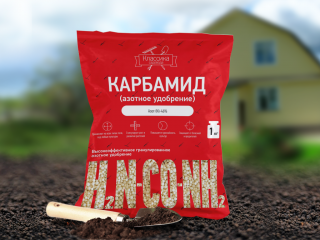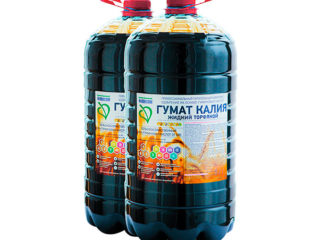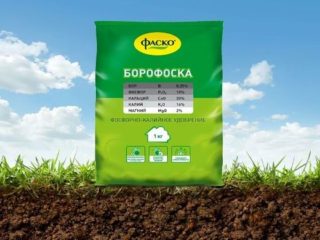Content
Flowers, vegetables, ornamental and fruit trees love fertile soil, but it is not always present on the site. Sandy or heavy clay soils create many problems for summer residents. The soil is fertilized annually with manure, humus, and mineral fertilizers, without obtaining the desired result. Sapropel as a fertilizer will help improve the soil composition and increase productivity, but for this you need to familiarize yourself with the rules for its use.
What is “sapropel”
Sapropel is a long-term sediment from the bottom of stagnant freshwater reservoirs. Translated from Greek it means “rotting mud.” It is formed from decaying aquatic plants, living organisms, plankton, soil and mineral particles. This mixture is considered the best fertilizer for the soil.It is environmentally friendly, safe, and also contains a huge amount of organic matter. The most valued sapropel is mined at a depth of 2 to 8 m. It accumulates exclusively in stagnant waters. And in lakes rich in vegetation and crayfish, the highest quality sapropel is formed. There are no analogues of this substance.
What does sapropel look like?
Sapropel (pictured) is a bluish, almost black powder, similar to ash. It is sold in the form of tablets, granules, emulsion or paste.

The product in all forms of release retains its color and beneficial properties.
Raw lumps of substance extracted from the bottom of stagnant reservoirs are not fertilizer; they are the original substance, which becomes fertilizer only after processing: drying, freezing, granulating, evaporating, grinding.

In agriculture, granulated and powdered sapropel is used for large areas
In summer cottages, liquid and paste fertilizers are more often used to restore poor soils.
Most likely, this mixture was obtained in a swamp environment and is not sapropel. Silt has such a substance at the bottom of swamps.
The commercially available substrate has 3 types of markings:
- A – universal, suitable for all types of soil;
- B – used for soil with high acidity;
- B – used for slightly alkaline and neutral soil.
How is sapropel different from sludge?
Many people believe that silt and sapropel are the same thing, but this is a misconception. The silt is poor in composition, it contains few organic substances (no more than 20%), and in sapropel their content reaches 97%.
There are differences in color, consistency and appearance. Sapropel is dark, almost black, odorless, with the consistency of thick sour cream; at low temperatures or air drying, it hardens and turns into stone.
The color of the sludge, depending on the location of extraction, varies from olive to pinkish brown. It has a musty smell and the consistency of plasticine. When dried and frozen it turns into powder.
Silt is formed in running waters over several years, thanks to debris and soil falling from the banks, and sapropel is a product of decomposition of the flora and fauna of a reservoir.
Characteristics and composition of sapropel
The substance enriches the soil, creates conditions for normal growth and development of plants. Once it is added to the soil, it will remain fertile for the next 3-4 years.
The natural fertilizer contains amino acids, phosphorus, sodium, potassium, nitrogen, manganese, vitamins and humic acids that disinfect the soil.
According to their research, substances extracted from different bodies of water differ in composition. This is explained by the characteristics of the environment, which directly affects the chemical formula of the product.
Where is sapropel used?
Agronomists recommend using sapropel in agricultural lands, private gardens and vegetable gardens, for flower beds, flower beds and indoor plants. This is a safe, environmentally friendly substrate. When used, root crops are preserved longer, the soil is enriched, and fruit and ornamental plants develop better.
Benefits of natural soil fertilizer:
- restores depleted land;
- retains moisture, allowing you to reduce watering;
- loosens heavy clay and loamy soil;
- neutralizes the effects of nitrates and fungal diseases;
- retains fertility for several years.

Fertilizer can be applied to the soil in both autumn and spring.
Benefits for plants:
- increases productivity;
- accelerates vegetation and stimulates the development of the root system;
- improves the survival rate of seedlings and the quality of fruits;
- prolongs the flowering process.
Where and how is sapropel mined?
The extraction of sapropel begins in the spring, while there is little water in the reservoir. To do this, use a suction dredger with loosening agents, which scoop out up to 30 m³ at a time.

The large-scale process of extracting natural fertilizer is very labor-intensive, but profitable
The extracted mixture is frozen and thoroughly dried until it turns into a powdery substance. Then they are crushed, pressed into tablets (granules) or an emulsion is made.
How to extract sapropel with your own hands
The manual method of extracting sapropel is much simpler. To do this you will need a pitchfork or shovel, a large container and transport for transportation. Wading pads and gloves will not be superfluous.
Mid-August - early September is suitable for preparing fertilizer, when the water level drops.

It is advisable to choose bodies of water located away from roads and industrial facilities.
The extracted mixture must be ventilated, dried and kept in the cold. Living sapropel that is not properly processed will rot and lose its beneficial properties.To speed up the process of draining liquid from the extracted fertilizer, it is recommended to use containers with holes in the bottom. Preliminary sifting of organic matter through a sieve will help improve the quality of drying.
How to use sapropel as fertilizer
The use of sapropel is most effective on sandy, sandy loam and acidic soils. It must be used strictly according to the instructions: apply directly into the hole, and then dig it up or pre-prepare a soil mixture from it.
The use of sapropel as a fertilizer improves the structure of the soil, increases the percentage of humus content in it and activates soil processes.
For seedlings
A substrate suitable for seedlings is prepared from natural fertilizer and soil in a ratio of 1:3. It stimulates the development of the root system and allows for simultaneous seedlings. This is a universal version of the mixture, but to improve performance it is better to prepare it individually for each crop in accordance with the instructions.
Seeds are sown in a bed dug up and fertilized with sapropel at the rate of 3 liters of the substance diluted with water per 1 m². This will speed up the germination of crops and increase yield.
When planting vegetables
Adding substrate to the beds for planting vegetables allows you to count on increased vegetable yields. Pre-prepared fertilizer is applied 1 handful at a time directly into the planting holes. For nightshade crops, sapropel, sand and soil are mixed in proportions 1:2:7; for planting cucumbers and zucchini, the same components are combined in proportions 3:4:6; for cabbage and greens, the soil is prepared at a ratio of 3:3:2.
According to reviews of the fertilizer, the use of sapropel on potato plantations can increase its yield by 1.5 times. Depending on the quality of the soil, before planting tubers, add from 3 to 6 kg of organic matter per 1 m².
For fruit and berry crops
Sapropel is also indispensable in the garden. Applying fertilizer when planting fruit and berry crops promotes better rooting of seedlings, stimulates vegetation and the appearance of ovaries. The substance is added to the planting holes (the ratio of sapropel to soil is 3:5).

As a result of enriching planting holes with fertilizer, fruit and berry crops will enjoy a bountiful harvest in the first year
Adult bushes need mulching around the tree trunks with a mixture of manure and sapropel in a 1:2 ratio. The composition is prepared in advance. It is then left to rot for four months. Fertilizing with ready-made fertilizer is carried out three times per season.
For flowers and ornamental shrubs
Biologists and gardeners recommend using sapropel for flower beds and ornamental trees. It helps strengthen roots, prevents yellowing of foliage, stimulates budding and flowering.
To feed flowers, fertilizer in liquid form diluted with water is suitable. The solution is watered 1-3 times per season. This mixture can be used to treat the flower garden in early autumn. The composition disinfects the soil, destroys fungal diseases, mold, bacteria and nitrates. In the spring the procedure is repeated. Such preventive measures will have a beneficial effect on the plants, the stems will become stronger, they will bloom for a long time, and the inflorescences will be larger and brighter.
It is enough to mulch ornamental shrubs and trees with sapropel mixed with soil in a ratio of 1:4 twice a year. After which the plant is watered and the soil is loosened.
For compost
When preparing compost for a summer cottage, mix sapropel with manure or slurry in a 1:1 ratio and use it in the usual way.
Freshly collected fertilizer is composted for 10-12 months before use, and frozen fertilizer is composted for 4 months. To compensate for the lack of phosphorus, 100 g of superphosphate is added to the finished compost.
To enrich the soil
In order to enrich the soil with nutrients, sapropel is finely crushed by hand and evenly distributed along the entire perimeter of the site, after which the ground is dug up. You can use fertilizer in liquid form. Agronomists claim that the result of the procedure is comparable only to a complete replacement of the soil. It becomes crumbly, light and fertile.
For indoor plants and flowers

Flowering of domestic plants fed with sapropel lasts longer
For indoor crops, the substrate is mixed with soil in a ratio of 1: 4. Fertilizer improves the decorative properties of plants, increases the duration of flowering and disease resistance. The mixture is recommended to be used as a top dressing for weak specimens, as well as when planting or replanting.
Other areas of application of sapropel
The use of sapropel is not limited to agriculture; it is also actively used in other fields of activity.
Eight areas where the natural component has found application:
- Industry – used as raw material for the production of fuel.
- Chemical industry - during its processing, paraffin and ammonia are obtained, which are used as additional raw materials in the production of rubber shoes.
- Construction - it is used as an absorbent when drilling soil.
- Agronomy - used to restore soil after drilling or mining operations, as well as places allocated for landfills.
- Medicine – used for physiotherapeutic purposes.
- Alternative medicine - found application in mud therapy. Masks and baths with the addition of sapropel can relieve cellulite, premature wrinkles, seborrhea, and baldness.
- Cosmetology - solves many problems with the skin of the body and face.
- Livestock - used as a dietary supplement in livestock feed.
Application in medicine
In medicine, sapropel is prescribed as therapeutic mud for applications, masks and baths.

The components contained in sapropel nourish the skin and improve metabolism
The organic mass has a positive effect on the immune system, strengthens capillaries, accelerates blood flow and metabolism, and breaks down cholesterol plaques. It improves the condition of fractures, arthritis, arthrosis, neuralgia, pneumonia, cystitis, prostatitis, psoriasis, eczema, and uterine erosion.
Sapropel has antibacterial properties and is safe for allergy sufferers.
How is sapropel used in livestock farming?
Sapropel is needed not only by humans, it is also useful for livestock. It contains many vitamins, macro- and microelements necessary for animals. It is added to feed for cattle, birds, and pigs. As a result of using the supplement, there is an increase in daily weight gain, an increase in the survival rate of young animals, milk yield increases in cows and the fat content of milk increases.
Thanks to better absorption of calcium, the bone skeleton of animals is also strengthened.
Conclusion
Agronomists, gardeners and biologists recommend using sapropel as a fertilizer for everyone on their plots. This ecological natural remedy is necessary for the enrichment and restoration of depleted soil.It contains a large amount of nutrients and has a positive effect on all types of plants and fruit crops.








